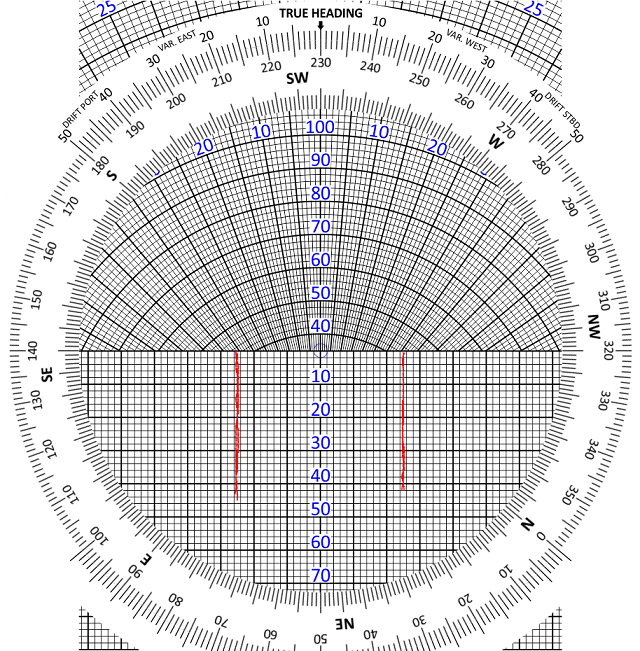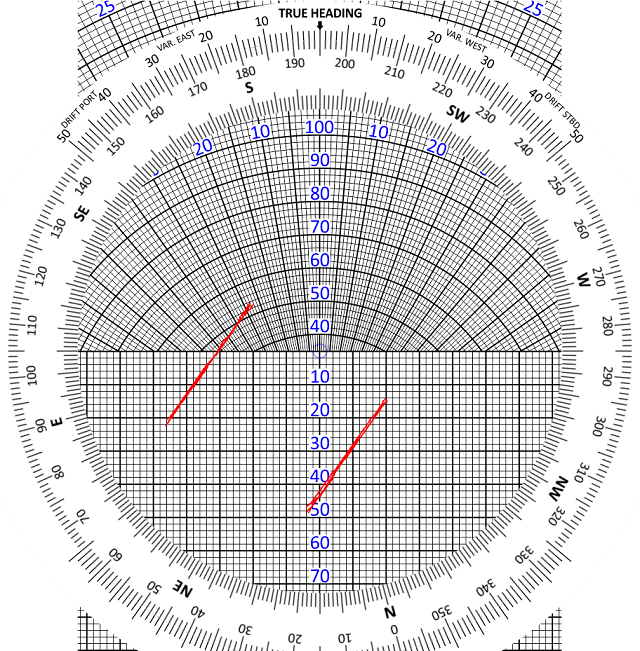The Navigation Computer: Maximum Wind Strength for a Given Crosswind Component
Sometimes the wind is blowing from a known given direction but it is gusting. A gust is defined as an increase in wind speed lasting less than one minute. Gusts will only be forecast or reported if 10 kt or more above the mean wind speed. You may wish to try to land between gusts. In this case you continue the approach down to the point at which you must commit to a landing or go around. For a visual approach this will be far lower than an instrument decision height. It may be 50 feet or lower, depending on the handling of your aircraft. At the last moment you request a spot readout of wind from the tower. If the wind strength from the actual direction gives a crosswind component of your crosswind limit or less, you can land. Otherwise, you must go around.
The moment of visual committal decision is no time to start calculating crosswind limits. You should have thought about it beforehand. Before you start the approach, you calculate what wind strength from the forecast direction corresponds to your crosswind limit on the runway in use. The calculations are made at the top of descent to allow an instant decision at the visual committal point.
Take the following case:
TAF W/V 180/10G50
Variation 15W
R/W 23
Crosswind limit 25 knots
This type of calculation requires a different technique. In this case, you do not have a single value of wind, so you cannot put it on your Navigation Computer.
Instead you put the runway and the crosswind on your computer, as follows:

Put the R/W QDM (230) up at the top.
Then draw in 25 knot cross limit parallel lines either side of the centre line.

Now rotate the wind disc to the direction that the wind is coming from.
Do not forget to apply variation, if necessary.
In this example, the wind comes from a TAF, which is true direction. So the magnetic direction will be 195°(M).
Now note where the applicable crosswind limit line crosses the centre line.
In this case, it is at 41 knots.
What this is telling you is that when the wind from 195°(M) reaches 41 knots, it will give you 25 knots crosswind on R/W 23. Provided that the wind is less than 41 knots from 195°(M), you may land.
© 2022 terms of use privacy policy